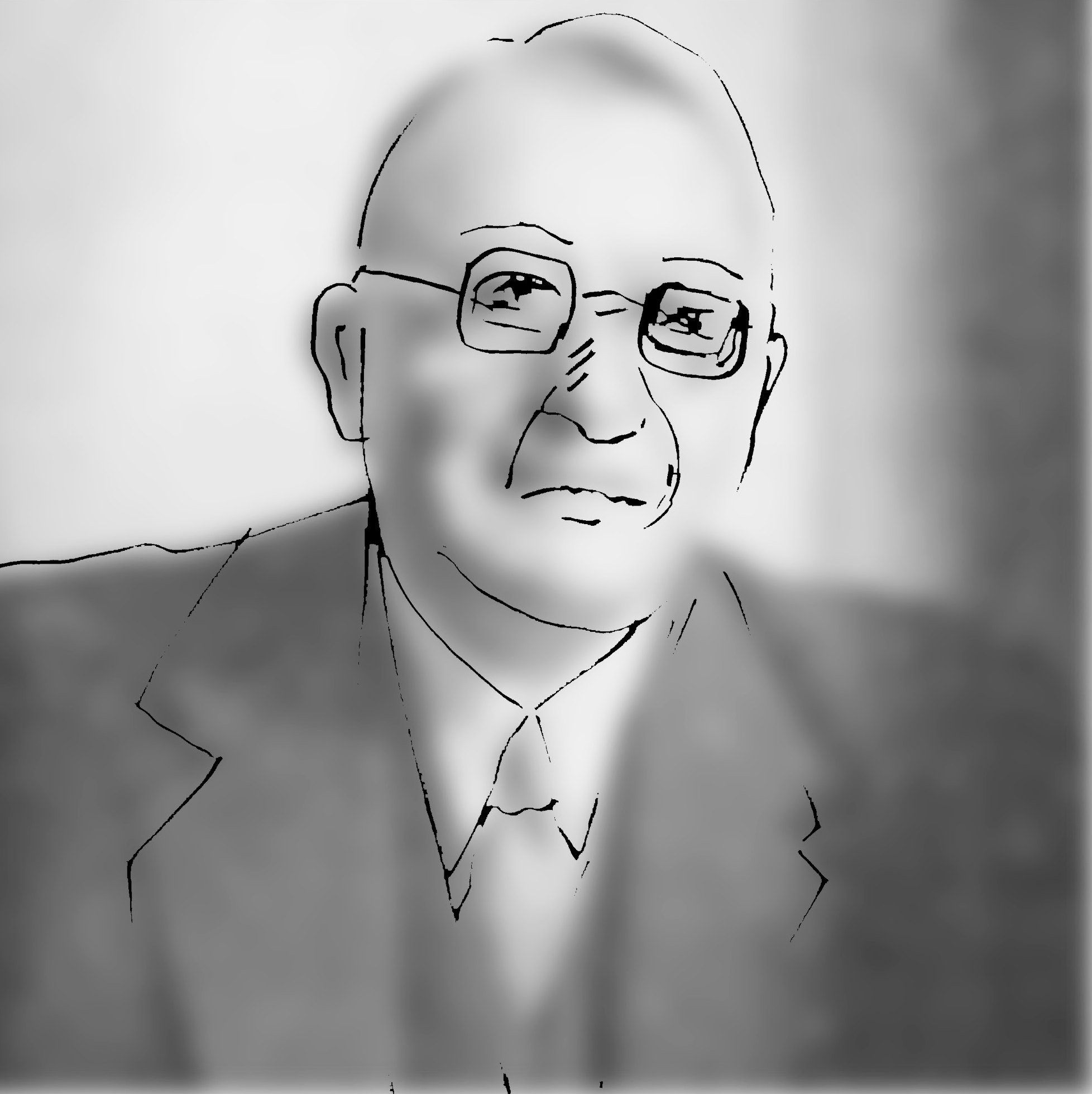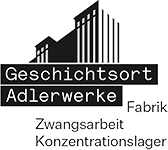> Adlerwerke Historical Site (Foyer)
> Geschichtsort Adlerwerke (Foyer)
> The forced labour system
> System Zwangsarbeit
> Foreign workers
> System Zwangsarbeit
> The concentration camp in the factory
> Das Konzentrationslager in der Fabrik
> Clearance and death march
> Räumung und Todesmarsch
> Legal proceedings
> Juristische Aufarbeitung
> After 45
> Nach 45
> Gallus – A changing community
> Das Gallus – ein Stadtteil im Wandel
Ernst Hagemeier (1888–1966) Manager in the age of the economic miracle
Denazification proceedings, 1947/48
In November 1947, the senior public prosecutor’s office in Frankfurt dropped its investigations into Ernst Hagemeier. He had often exhibited “a humanitarian understanding of the inmates’ situation”.
Independently of that decision, denazification proceedings against him were initiated barely two months later. His lawyer had prepared thoroughly and was able to submit some 46 written testimonies to the court. The witnesses for the defence included authorized Adlerwerke signatories, simple employees, a Gestapo officer, the chairman of the works council, and even a dean. They all underscored Hagemeier’s rejection of Nazi ideology and the Nazi party NSDAP, his efforts to ensure the good care of the forced labourers, and his loyalty towards Jewish employees. Incriminating witness statements hardly played a role in the verdict. He was classified as a “Mitläufer” (“follower”).

Institut für Stadtgeschichte Frankfurt am Main, inv. S2, no. 2216
B/w photo, later colouration
Internment camp (1946/47)
Ernst Hagemeier planned to reconstruct the Adlerwerke. On 3 August 1945, however, he was arrested by the U.S. military administration. Following initial interrogations he was transferred to the internment camp for suspected war criminals in Dachau in August 1946. He staunchly denied all responsibility for the maltreatment of forced labours. In 1947, the U.S. military administration ordered that only more major cases with clear evidence were to be pursued further. That helped Hagemeier.
He was released from the internment camp on 17 April 1947. In the court proceedings that would follow, his discharge papers with the wording “Cleared by War Crimes” served him as an important document in his exoneration strategy.
Chairman of the board of directors after 1947
No sooner had he been released in 1947 than Ernst Hagemeier returned to the Adlerwerke board of directors. There he pushed for changes in the company’s product range. The Adlerwerke abandoned automobile production and began manufacturing bicycles, motorcycles, office machines, and machine tools instead. From the present-day perspective it was a bad economic decision.
In early 1953, Hagemeier was awarded the Order of Merit of the Federal Republic of Germany for his achievements in the rebuilding of the Hessian economy. At his own request, Hagemeier resigned from his post as chairman of the board of directors in 1955. Two years later, the Adlerwerke was taken over by the Grundig company.
Manpower from abroad
“Alien workers”
In the Nazi period, the Germans used the term “Fremdarbeiter”—“alien workers”—to refer to civilian foreign workers. In the post-war era, the term served to obscure the involuntary nature of many employment relationships between 1939 and 1945.
“Guest workers”
The term “guest workers” was rarely heard in the Nazi period. Starting in the 1960s it was used to refer to migrant workers. The German authorities assumed that they would remain in Germany for only a limited time. “Guest worker” was considered a friendlier term than “alien worker”. There was also an effort to avoid any association with the history of forced labour.
“Foreign civilian workers”
During the Nazi period, the administration referred to forced labourers employed by civilian companies or government agencies as “foreign civilian workers”. The use of this term made it unclear whether the workers were employed voluntarily or by force. In the early phase of the war, foreign civilian workers were recruited on a voluntary basis. As the fighting continued, the conditions for foreign workers worsened radically.
“Eastern workers”
The Nazi administration used the term “Eastern workers” primarily to refer to forced labourers from the countries of the Soviet Union. Starting in 1941, entire groups of persons born in a certain year were conscripted at once and transported to the German Reich. From 1942 onwards, “Eastern workers” had to wear a badge with the letters “OST” (east) on their clothing. According to Nazi race theory they made up the lowest rank. Only persons persecuted as Jews or “Zigeuner” (derogatory term for Sinti and Roma) ranked lower. Special laws that went into force in 1942 robbed the “Eastern workers” of nearly all their rights.

Deportation from Jankowo station in Poland to Germany for forced labour
Propaganda photo, March 1943
German Federal Archives, image 183-J22099, photo: Krombach
Ernst Hagemeier (1888–1966) Company manager during the Nazi period
Between boycott and “Aryanization”
Ernst Hagemeier became a member of the Adlerwerke’s executive board in 1929. As general director he soon rose to become the company’s main shareholder.
The Adlerwerke did not support the National Socialist party (NSDAP) financially before 1933. In that year, the Nazis therefore called for a boycott of the Adlerwerke. Following the party’s accession to power, Hagemeier saw to it that not all Jewish employees were dismissed. He sent many of them to work in subsidiaries abroad. The Nazis accordingly accused him of “friendliness to Jews”.
On the other hand, when Jakob Goldschmidt came under threat of being chased off the supervisory board, Hagemeier did nothing to prevent it. Under his management, the Adlerwerke profited from “Aryanization”. It was able to purchase, at low prices, the land of four neighbouring companies whose owners were persecuted as Jews. The Adlerwerke thus expanded its property.

Institut für Stadtgeschichte Frankfurt am Main,
inv. S2, no. 2216
Member of the Nazi party and the SS
In 1933, Ernst Hagemeier applied for membership in the Nazi party NSDAP. He was not admitted until 1939. He moreover joined the General SS, where he had the rank of an SS Untersturmführer.
He worked for the SS as an expert on automobility. In 1934/35 he became the head of the “Motorized Vehicle Industry Economic Group”. There he came into conflict with influential National Socialists who wanted to promote party interests. As a result, he gave up the post again in 1937.
In 1937, the Munich SS court excluded him from the organization. The grounds for this decision were that he had not attended SS events and continued to cultivate business contacts with Jews.
Responsibility for armament, forced labour, and concentration camp
General director Hagemeier was a pragmatic manager. He made sure his dealings with the Nazi regime would work to the company’s advantage. Starting in 1939, the Adlerwerke increasingly took on armaments’ orders and Hagemeier received the honorary title “Wehrwirtschaftsführer” awarded to the heads of important armaments manufacturers.
Ever more company employees were conscripted to the Wehrmacht, and the Adlerwerke needed replacements. Now foreign civilian workers and prisoners of war from France and Eastern Europe were brought in. These workers lived in camps in the Gallus and Griesheim districts. Concentration camp inmates were put to work at the Adlerwerke from August 1944 onwards. The “Katzbach” concentration camp was set up on the factory premises.

